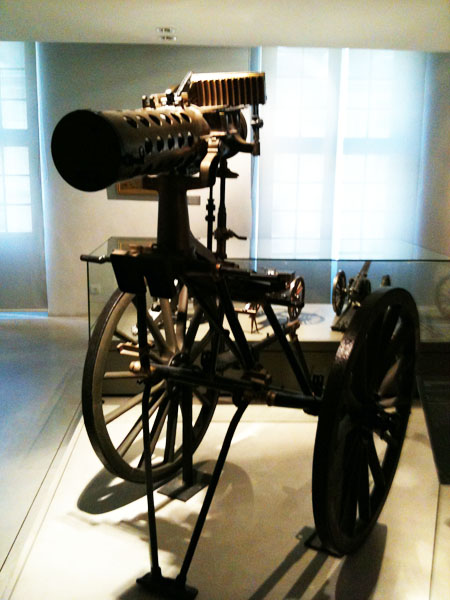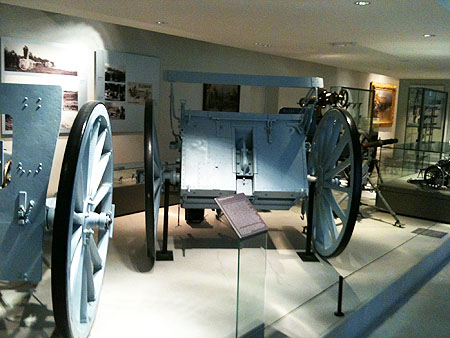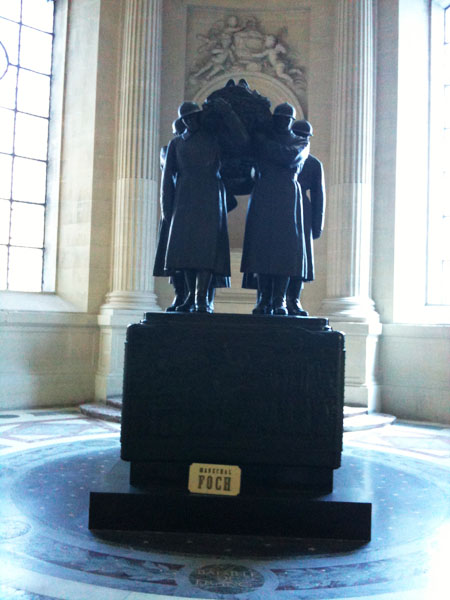I was lucky to find myself in Paris for a business meeting so thought a trip to the Musée de l'Armée would fill that gap in teh schedule. The Musée de l'Armée is a museum at Les Invalides in Paris, France. Originally built as a hospital and home for disabled soldiers by Louis XIV, it now houses the Tomb of Napoleon and the museum of the Army of France. The museum's collections cover the time period from antiquity until the 20th century.
The museum was established, under the name Musée de l'artillerie (Museum of Artillery - "artillerie" then meant all things related to weapons), in 1871, immediately after the defeat during the Franco-Prussian War and the proclamation of the Third Republic, in the Hôtel des Invalides.
Please excuse the photo qulality as I only had my phone on me.

The outside of the museum, its a very imposing building!




I believe this is a master for statue to commemerate the Franco-Prussian war (no label so I could be wrong)

The French 75mm field gun was a quick-firing field artillery piece adopted in March 1898 after 5 years of research and secret trials. It saw widespread service in World War I including in the American Expeditionary Forces (AEF). It also served during World War II in various but more limited capacities. It was commonly known as the French 75, simply the 75 and Soixante-Quinze (French for 75). Its official French designation was: Matériel de 75mm Mle 1897. It introduced, for the first time in the history of field artillery, a hydro-pneumatic long recoil mechanism which kept the gun's trail and wheels perfectly still during the firing sequence. Since it did not need to be re-aimed after each shot, the French 75 could deliver fifteen rounds per minute on its target, either shrapnel or high-explosive, up to about 5 miles (8,500 meters) away.

Napoleonic Artillery Caisson

Early Gatling Gun on its carriage


A view of the rear of the French 75

The limber for the French 75, used to carry crew and ammunition



Uniform of a Prussian Hussar, note the Totenkopf (Deaths Head)



Uniform of an American Officer of the US Expeditionary Force during 1918

Uniform of the US Doughboy






German Goliath Remote Control Demolition Tank

Tomb of Marachel Foch. Ferdinand Foch (pronounced "Fosh") OM GCB (2 October 1851 – 20 March 1929) was a French soldier, military theorist, and writer credited with possessing "the most original and subtle mind in the French army" in the early 20th century. He served as general in the French army during World War I and was made Marshal of France in its final year: 1918. Shortly after the start of the Spring Offensive, Germany's final attempt to win the war, Foch was chosen as supreme commander of the Allied armies, a position that he held until 11 November 1918, when he accepted the German request for an armistice.

The decorated dome of Napoleons tomb

Another view of the decorated dome of Napoleons tomb

Napoleons tomb
.
|
